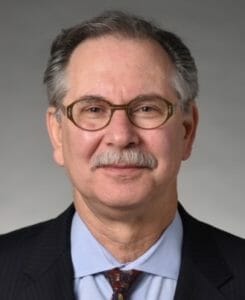
What defines successful, quality care in a skilled nursing facility? Who defines it? How is it defined?
Certainly, there are varying ways to consider these fundamental questions, viewed from the perspectives of (a) individuals receiving care and services including advocates and representatives on their behalf, (b) individuals, agencies and entities bearing the cost of care, and (c) government agencies with the mission, power, and authority to oversee and enforce applicable laws.
Skilled nursing facilities have an essential voice as well. Ultimately, and finally, it falls to each individual skilled nursing facility and its caregiving team to learn, understand and respond to all these requirements and expectations of nursing homes, aspiring to a credible, trusted reputation for delivering effective care and services.
Residents and their representatives have rights and protections. Staff have rights and protections. Those paying for the cost of care have rights and protections. Government has power and authority. What are the rights and protections for caregiving skilled nursing facilities?
There needs to be recognition of a fundamental right for SNFs. That is, the right to a clear, coordinated, manageable process by which these various interlocking and overlapping rights and protections are developed and melded together into an agreed set of expectations about which SNFs are educated, and for which they are reimbursed and accountable. In my estimation, this is not currently the case.
This is not the first editorial postulating that skilled nursing facilities are second only to nuclear power plants in the degree to which they are regulated. Such observations typically are followed by a proposal or plea for a particular change, such as a reform to the CMS survey and inspection process.
My plea is more simple, i.e., that as a first step there be a requirement for a coordinated communication process such that no one government agency is able to impose a requirement on a skilled nursing facility without demonstrating how that agency has determined whether or how its requirement overlaps or interrelates with comparable requirements of other government agencies. Each such government agency should verify how the agencies will communicate with each other and collaborate on unified guidance to establish a consistent standard and system of accountability for the affected SNF. This should be recognized as a clear right of the governed SNF.
Today, SNFs are subject to multiple, varying and sometimes conflicting requirements of multiple government agencies. Each of these agencies currently strives to do their utmost to demonstrate how they are fulfilling their respective missions and using their individual authority to demand accountability for compliance with their requirements. In doing so, these agencies often use task forces or other interagency structures to articulate priorities or coordinate on enforcement. But, even with all of this regulation, there appears to be no mandate for a process by which agencies measure, and if necessary, adjust, their own requirements against other agency regulations.
The questions are simple: “Is another agency already regulating in this area? If we impose a new, separate requirement with additional penalties, how will the SNF be reasonably expected to respond in providing effective care and services for which reimbursement is available?”
Different agencies have different authority and areas of focus and expertise. But, when they act separately, they all focus on and hold the same SNF to account. Hasn’t the response to the COVID-19 pandemic illustrated that? So, for example, in response to the need for a sufficient, trained stable staff operating in a clinically safe workspace, shouldn’t CMS, CDC, OSHA and the DOJ start with the question, “If each of our agencies has a role in this area, how do we communicate a coordinated set of expectations to the SNF to manage?
Similarly, in the area of staffing, how will agencies coordinate? Currently, state licensing agencies regulate based on separate requirements for staffing. CMS is on the verge of commencing its own research and imposing its own standards. Federal and state law enforcement determines and prosecutes when they believe staffing is associated with “worthless services” and can assert claims for reimbursement are false.
Shouldn’t there be a clear, communicated, and manageable set of expectations for how facilities can identify, train and retain a mix of staff that meets the needs of residents, with accountability to the agency best able to understand and work with the SNF on the particular issue?
It should not be considered an acceptable regulatory process for one agency to simply look to its own mission, power and authority alone and look at impact only from the perspective of its own requirements. An unfortunate effect of a siloed government approach to regulation is that it causes SNFs to be in a reactive posture, responding to the most current enforcement initiative or action presenting itself. By communicating a clear set of coordinated expectations, developed with input from all stakeholders, SNFs will be better positioned to develop service delivery models and structures and make investments in response to known expectations.
A mandatory process for collaborative government SNF regulatory review and rulemaking, and the development of subregulatory guidance, should address resident and caregiver rights, goals and outcomes and also be developed in conjunction with each agency responding to the question: How do we expect the SNF to respond to this existing or proposed requirement in light of other requirements, conditions and reimbursement already applicable to the SNF and its clinical and administrative team?
Otherwise, we are left with a process where each agency can, from its own silo, claim it is doing its job without also “walking in the shoes” of the SNF for just a few steps. All would benefit, including the residents served.
Howard L. Sollins is a healthcare regulatory attorney, shareholder, and leader of the Long Term Care Center of Excellence at Baker Donelson. He can be reached at [email protected].
The opinions expressed in McKnight’s Long-Term Care News guest submissions are the author’s and are not necessarily those of McKnight’s Long-Term Care News or its editors.




